Written by Markus Loris, Product Manager
Schreiner ProTech | schreiner-protech.com

A fully automatic assembly machine for double-sided adhesive tapes.
Self-adhesive die-cut parts are increasingly working alongside or replacing conventional mechanical fastening methods for affixing, sealing, or leveling certain assemblies. And for good reason: these ultra-sticky solutions are true “lightweight heavyweights,” providing manufacturers with exceptionally flexible design and processing possibilities.
However, there are several subsets within this genre of adhesives, which are important to understand before choosing the ideal fastening solution.
Generally speaking, a distinction can be made between simple and complex laminates for die-cut parts, which can permanently or removably bond to a portion of or all of a component’s surface.
- Simple laminates are ideal when the purpose is bonding. Typically, self-adhesive die-cut parts are used, consisting of either adhesive two-sided tapes or transfer adhesives.
- Complex laminates, which often have multilayer structures, are the preferred choice when one component must perform several functions, such as any combination of bonding, height compensation, damping, temperature compensation or dust protection.
Pressure-sensitive adhesives are particularly efficient because they require no drying time. For manufacturers, this means significantly shorter processing times and lower energy consumption.
The portfolio of available sizes and shapes of die-cut parts ranges from miniature formats, a few millimeters in size, to large dimensions with complex geometries.
The assembly and delivery forms are nearly as varied as the products they help assemble. For example, the packaging of die-cut and formed parts are commonly available on rolls, sheets, stacks, and as individual parts. The shape of the finished product is determined by a manufacturer’s distinct production process.
The so-called base liner is the carrier for self-adhesive products, but it can also perform additional functions. At the very least, the base liner should include perforations to simplify the separation of the die-cut parts — an efficient and convenient alternative to bulk material.
“Locating holes” serve as positioning aids in the application process and the poka-yoke principle (the practice of error-proofing) ensures accurate fit and positioning. In this step, it’s important to ensure double-sided adhesive products are covered on the top side for protection before use.

An assembly machine in operation. The “endless” cover liner is removed before dispensing the double-sided adhesive tape.
Many cover liners are suitable for die-cut parts: endless cover liners are typically used in fully automatic assembling processes. The term “endless” is used because they have no set boundaries, meaning they can cover the entirety of an object. Die-cut cover lines are used for manual or semi-automatic dispensing.
The benefits of bonding
Adhesive joints are increasingly performing certain bonding duties conventionally accomplished with screws. The decision to “glue, not screw” can provide benefits, depending on the application, including:
- Ability to bond to a variety of substrates
- Reduces assembly weight
- Offers an even distribution of stress on the load (while resisting vibration)
- Ensure protection from corrosion
- Optimize efficiencies and reduce costs (compared to drilling or other bonding processes like soldering, crimping, or welding).
Advancing industries with adhesion
The automotive industry is heavily relying on self-adhesives for fastening different components, protecting in-vehicle devices, and providing height compensation. For example, rain sensors are attached to the inside of windshields by means of a UV-stable, double-sided adhesive die-cut part. Trim strips in the interior are attached by a foam die-cut part with a practical grip tab, which also compensates for height.
For in-vehicle sound systems, a double-sided adhesive die-cut part typically serves to fasten and protect sensitive components.
In addition, self-adhesive die-cut parts are adding considerable ease and efficiency to automotive production lines as processing, assembly, and positioning aids. For instance, shaped die-cut variants use individual adhesive dots to help position and precisely affix components as an assembly aid in the welding and soldering process. This selective bonding ensures that sufficient solder can later penetrate between components, joining them securely and permanently.
Adhesive applications are providing a key function in the manufacturing of electronics and Industry 4.0.
In advanced process and automation, intelligent RFID (radio frequency identification) data carriers are an important building block. RFID transponders are typically attached to components and trays; however, this must be done with extreme care. Metal screws could adversely affect the readability of a tag’s chip. As a result, self-adhesive solutions have become the method of choice.

Self-adhesive die cuts are providing manufacturers in several sectors with a flexible, lightweight bonding solution that also ensures durability.
Application matters
There are several application techniques available for stamped and formed parts, depending on the assembly. For die-cut parts, it’s important to consider the processing, dispensing, and inspection methods.
In advanced production, automated production cells that employ robotics offer clear advantages here: robotic arms are quicker and more consistent than humans, resulting in more accurate and efficient production. However, users should always be mindful that manufacturing cells — robotically controlled or otherwise — should be modular in design (e.g. equipped with an exchangeable vacuum stamp). Only then are minimal adjustments necessary if, for example, new production variations are introduced that require additional processing steps.
Self-adhesive die-cut parts are no longer a simple alternative for minor joining challenges. These varied and versatile solutions provide significant support for the types of manufacturing efficiencies and line optimizations in a range of engineering environments.

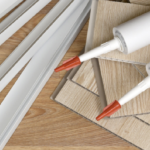
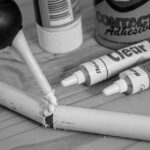
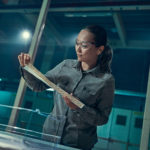



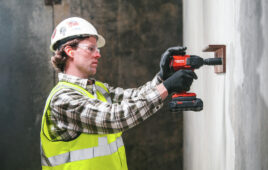
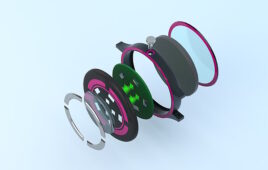
Tell Us What You Think!